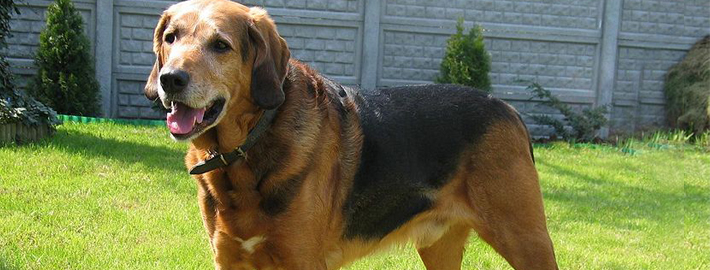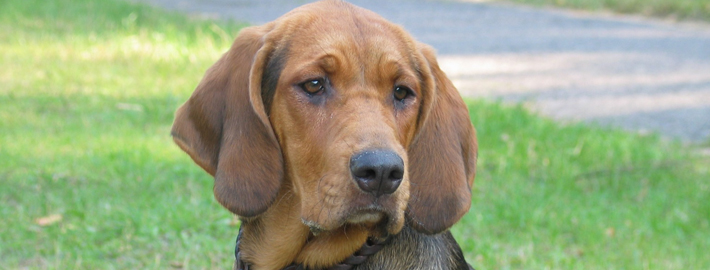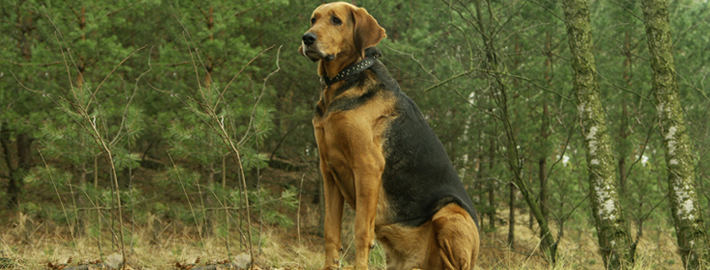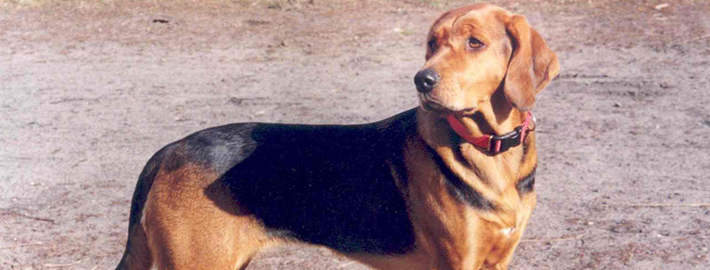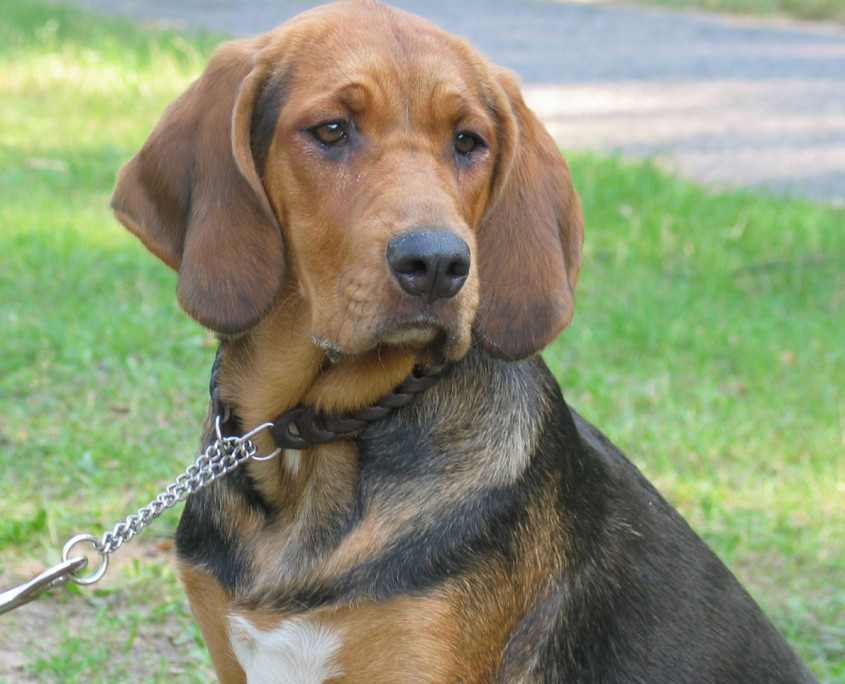What makes the Polish Hound Unique?
Although they are considered a rare breed in other portions of the world, Polish Hounds have been popular hunting dogs in their homeland for some time.
Breed Groups
Page Contents
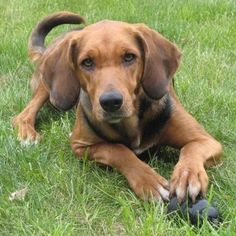
Is the Polish Hound Right For You?
Polish Hounds would be a good pet choice for active people who are seeking a companion dog to join them on their adventures. Although these dogs tend to be rather lively individuals, they are not as exuberant as some breeds and most will behave quite well as house pets if they are given enough exercise. Even so, Polish Hounds are better suited to suburban or rural households as they can be quite vocal and they should not be placed in a situation where this trait could cause unwanted complications for their owners. Members of this breed also greatly benefit from having access to a moderately sized yard that has been fenced in so that they can safely run about and play.
In 5 Words
- Keen
- Courageous
- Loyal
- Gentle
- Intelligent
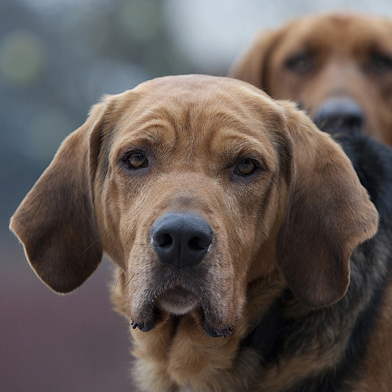
Characteristics
Learn About the Polish Hound
Description
General Description
Members of this sizeable breed have an athletic appearance. They possess large, well-formed heads with large skulls and muscular necks. Highly wrinkled foreheads, lengthy muzzles, and formidable jaws can also be seen on these dogs. Their sizeable noses are quite wide. Low-set, pendulous ears with rounded tips are yet another breed feature. Polish Hounds also have dark brown, slanted eyes. These dogs have curved ribs, wide torsos, and level backs. Their large tails are low set and hang lower than their rumps.
Size
Male Polish Hounds typically stand between 22 and 22.5 inches (56 and 65 centimeters) tall with their female contemporaries being a trifle smaller at 22 to 23.5 inches (55 to 60 centimeters) in height. Male dogs of this breed also weigh slightly more than the females do with the latter averaging between 55 and 70.5 pounds (25 and 32 kilograms) rather than 44 to 57.5 pounds (20 to 26 kilograms) for the former.
Coat
Members of this breed possess a moderately long, water resistant, double- coat that has an especially thick under layer. Their fur is somewhat longer on their tails, hind legs, and backs than it is on the rest of their bodies. Polish Hounds typically have bicolored fur. They come in combinations including brown and tan, black and tan, or red and black. White markings may also be seen on their chests, lower legs, and the tips of their tails.
Short History of the Polish Hound
Polish Hounds have an ancestry that dates back to the Middle Ages when their progenitors roamed the dark, vast forests of Poland in search of prey. Breeds called the “Polish Scent Hound” and “Polish Hounds” found their way into existence by the early 19th century and an official standard was created for these dogs as well. However, these individuals were primarily working dogs. As a result, they were not seen in the show ring until after the First World War. Polish Hounds owe much to a man named Colonel Jozef Pawuslewicz who helped revitalize and standardize the lighter boned version of the breed after the Second World War. A new list of rules and regulations regarding these dogs was eventually adopted in 1983.
Temperament
Polish Hounds are intelligent animals with stable personalities. These friendly dogs are not aggressive at all and can be quite affectionate towards members of their own families, children in particular. After all, these canines love nothing more than a game of fetch. Polish Hounds are also quite amenable towards other animals that live in their households, but they do tend to be on their guard around unfamiliar people and will loudly sound the alarm if anyone they don’t know enters their domain. However, there is some debate on the issue of this breed’s ability to be used as a guard dog. While Polish Hounds are protective of their territories, these dogs tend to do so in a passive fashion and may do little more than bark if an unfamiliar person approaches.
Members of this breed make great hunting dogs. In fact, Polish Hounds are known for their stamina in the field as well as their excellent noses, melodic voices, and unquestionable bravery. These all-weather dogs are capable of hunting on a wide variety of terrains without any sort of problems. Prospective owners that don’t plan to take their pets hunting should be aware that these dogs do need regular workout sessions in order to be at their best. Therefore, Polish Hounds would be a good pet choice for active people who are seeking a companion dog to join them on their adventures. Although these dogs tend to be rather lively individuals, they are not as exuberant as some breeds and most will behave quite well as house pets if they are given enough exercise. Even so, Polish Hounds are better suited to suburban or rural households as they can be quite vocal and they should not be placed in a situation where this trait could cause unwanted complications for their owners. Members of this breed also greatly benefit from having access to a moderately sized yard that has been fenced in so that they can safely run about and play.
Caring for Your Polish Hound
General Health
Polish Hounds generally live about thirteen years or so, but instances have been reported of individual dogs living longer than that. For the most part,members of this breed are quite healthy animals. In fact, there have been no specific medical issues that pet owners need to be look out for, aside from the obvious ailments that can arise in all canines from time to time.
Care
Daily
Polish Hounds are energetic individuals that need a great deal of regular exercise in order to be at their best. Daily walks are recommended for members of this breed. These dogs may also enjoy jogging or games of fetch.
Weekly
All dogs should have their teeth cleaned regularly with vet approved products to keep them in good oral health including Polish Hounds.
Monthly
All dogs need to be given parasite prevention medications once a month to keep harmful pests at bay.
Grooming & Bathing
Polish Hounds have limited grooming requirements. However, these dogs shed moderate amounts of fur on a regular basis and brushing them a couple of times per week can help keep their households from becoming covered with fur. Polish Hounds should only be bathed if they get dirty or smelly because washing them more frequently could damage their coats’ ability to repel water. Members of this breed that go hunting on a regular basis will also need to be checked over for injuries upon their return home and have these treated accordingly. Giving the dog in question a quick brushing as well will additionally help get rid of any burrs or thorns that might have become entangled in its coat during the course of the day.
Exercise & Training
Polish Hounds are smart dogs with a zest for learning. However, these dogs cannot be forced into doing what they don’t want to do and owners should adapt their training with this aspect of their personalities in mind. As is the case with most breeds, consistent rules and a fair hand go a long way in teaching these dogs what they need to know. Prospective owner should likewise note that these dogs may even take longer to grow up than members of similar breeds.

